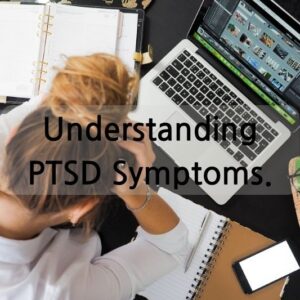Introduction to PTSD
Post-Traumatic Stress Disorder (PTSD) is a mental health condition that can develop after experiencing or witnessing a traumatic event. It can affect anyone, regardless of age, gender, or background. Understanding PTSD symptoms is crucial for recognizing and addressing the condition effectively.

What Triggers PTSD?
PTSD can be triggered by various traumatic events, including but not limited to:
- 1. Combat exposure
- 2. Physical or sexual assault
- 3. Natural disasters
- 4. Accidents
- 5. Witnessing a violent event
Recognizing PTSD Symptoms
Recognizing the symptoms of PTSD is essential for early intervention and treatment. Symptoms may vary in intensity and duration, but common signs include: Emotional Symptoms
1. Intense fear or anxiety
2. Persistent anger or irritability
3. Feelings of guilt or shame
4. Emotional numbness or detachment
Behavioral Symptoms
- 1. Avoidance of trauma-related stimuli
- 2. Social withdrawal
- 3. Hypervigilance or heightened startle response
- 4. Self-destructive behavior
Cognitive Symptoms
- 1. Intrusive memories or flashbacks
- 2. Negative thoughts or beliefs about oneself or others
- 3. Difficulty concentrating or remembering details
- 4. Distorted sense of reality
Physical Symptoms
- 1. Sleep disturbances
- 2. Fatigue or lethargy
- 3. Headaches or migraines
- 4. Gastrointestinal problems
Impact of PTSD on Daily Life
PTSD can significantly impact various aspects of daily life, including:
1. Relationships
PTSD may strain relationships due to emotional withdrawal, mood swings, and difficulty in communication.
2. Work or School
Symptoms of PTSD can interfere with concentration, productivity, and attendance at work or school.
3. Physical Health
Chronic stress associated with PTSD may contribute to the development of physical health problems such as hypertension, cardiovascular disease, and autoimmune disorders.
4. Mental Health
Untreated PTSD can lead to the development of other mental health conditions, including depression, anxiety disorders, and substance abuse.
Seeking Help for PTSD
It’s essential for individuals experiencing PTSD symptoms to seek professional help. Treatment options may include:
1. Therapy
Cognitive-behavioral therapy (CBT), exposure therapy, and eye movement desensitization and reprocessing (EMDR) are common therapeutic approaches for PTSD.
2. Medication
Antidepressants, anti-anxiety medications, and sleep aids may be prescribed to alleviate symptoms of PTSD.
3. Support Groups
Joining support groups or connecting with peers who have experienced similar trauma can provide valuable emotional support and coping strategies.
Conclusion
Understanding PTSD symptoms is the first step toward healing and recovery. By recognizing the signs and seeking appropriate treatment, individuals can regain control of their lives and move forward from the trauma they have experienced.
FAQs About PTSD Symptoms
How common is PTSD?
PTSD can affect anyone who has experienced a traumatic event. It is estimated that about 8% of the U.S. population will experience PTSD at some point in their lives.
Can PTSD symptoms develop immediately after a traumatic event?
While symptoms of PTSD typically appear within three months of a traumatic event, they can also emerge years later.
Are PTSD symptoms the same for everyone?
PTSD symptoms can vary widely among individuals and may change over time. Factors such as the nature of the trauma, personal resilience, and available support systems can influence symptom presentation.
Is PTSD treatable?
PTSD is treatable with the right interventions. Therapy, medication, and support groups can help individuals manage symptoms and improve their quality of life.
Can PTSD symptoms worsen over time?
Without treatment, PTSD symptoms can worsen and have a significant impact on an individual’s mental and physical health. However, with appropriate care, many people experience improvement in their symptoms and overall well-being.
